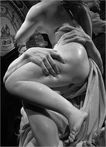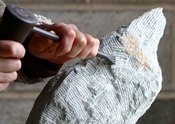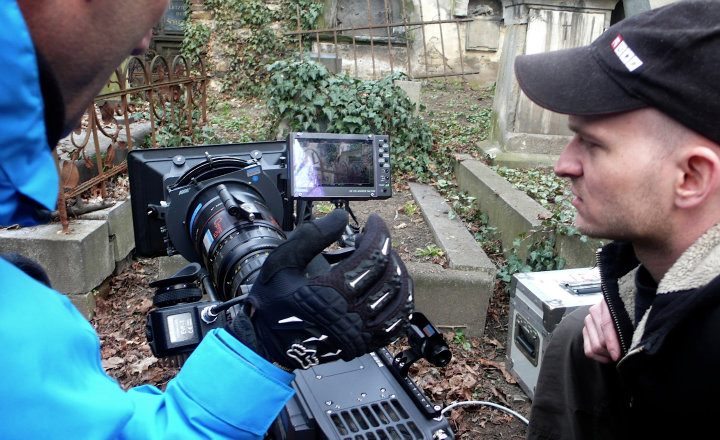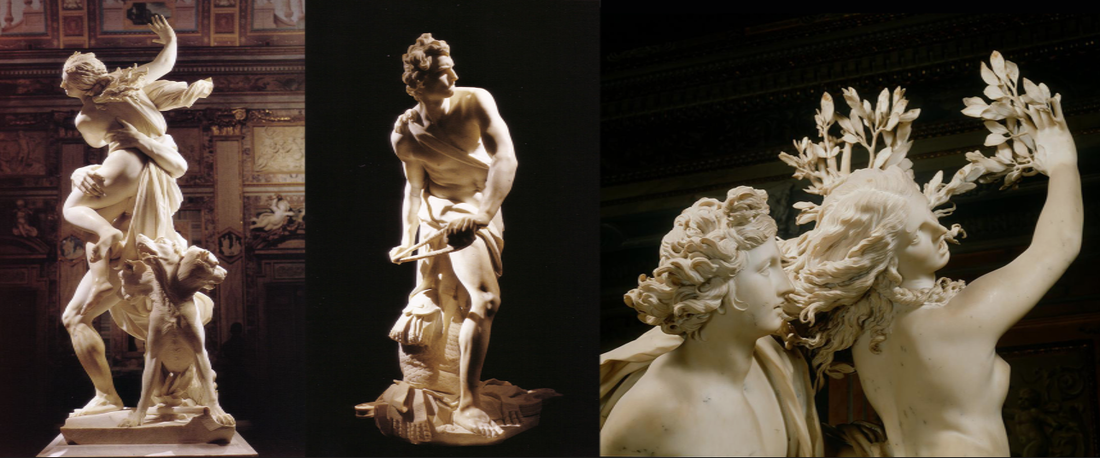
Overture
I’ve wondered before why anyone should value the work of the artist.
I don’t say that because I do not value it myself. It’s artist’s guilt. When the desire of the artist to create something is so strong they do not care what the rest of the world thinks, it can still lead to guilt for doing it.
See, the artist works from an innate compulsion. The artist cannot always explain why they are compelled to sing, compelled to write, compelled to draw. Usually, the artist will do these acts regardless if they have an audience or not. But without an audience to receive that compulsion, it's easy for the artist to question it's validity.
The resulting guilt is probably what leads some artists into self-destruction and poverty, even when they do find their audience. It's also this guilt that remains after they’ve asked their families to “please bear with me.”
If one interprets the artist in this way, it seems as if being an artist is a burden.
But that’s not going to stop them from being who they are. So instead we should ask: Why should we value the artist?
I’ve wondered before why anyone should value the work of the artist.
I don’t say that because I do not value it myself. It’s artist’s guilt. When the desire of the artist to create something is so strong they do not care what the rest of the world thinks, it can still lead to guilt for doing it.
See, the artist works from an innate compulsion. The artist cannot always explain why they are compelled to sing, compelled to write, compelled to draw. Usually, the artist will do these acts regardless if they have an audience or not. But without an audience to receive that compulsion, it's easy for the artist to question it's validity.
The resulting guilt is probably what leads some artists into self-destruction and poverty, even when they do find their audience. It's also this guilt that remains after they’ve asked their families to “please bear with me.”
If one interprets the artist in this way, it seems as if being an artist is a burden.
But that’s not going to stop them from being who they are. So instead we should ask: Why should we value the artist?
The Single Serving Expense
Yesterday, my sister saw a giant kite flying high in the air. It was the kind of kite you can see from 5 miles away. She wondered aloud: “A kite like that must be expensive. Why would anyone waste their money on that?”
Most kites are broken by the end of a weekend at the beach. They are not made to last. They are single serving kites to keep the kids busy. Fun like a ferris wheel.
So why pay for that kite that is so expensive, when you can spend your money on something else?
Yesterday, my sister saw a giant kite flying high in the air. It was the kind of kite you can see from 5 miles away. She wondered aloud: “A kite like that must be expensive. Why would anyone waste their money on that?”
Most kites are broken by the end of a weekend at the beach. They are not made to last. They are single serving kites to keep the kids busy. Fun like a ferris wheel.
So why pay for that kite that is so expensive, when you can spend your money on something else?
For those of use who only see the marble, we see only the cost of spending our lives chipping away at it. That big slab of marble embedded in a mountain took centuries to form. Changing such a thing is very expensive, especially if all you see is a big heavy rock.
But maybe the first stone carver looked at the marble and saw something else. Maybe he saw a drowning figure stuck inside, pleading to be set free. If the artist did not take it upon himself to release it, that image would be lost forever.
Gian Lorenzo Bernini was an Italian sculptor who might agree. It took him as long as six years to complete some of his stone sculptures. That’s a lot of sweat, arthritis, frustration and study.
But for Bernini, it was far more expensive to leave the image lost in the rock.
It's difficult to understand that cost if we only see the slab of rock and not the image inside.
But some of us never know how expensive it is to set that image free.
But maybe the first stone carver looked at the marble and saw something else. Maybe he saw a drowning figure stuck inside, pleading to be set free. If the artist did not take it upon himself to release it, that image would be lost forever.
Gian Lorenzo Bernini was an Italian sculptor who might agree. It took him as long as six years to complete some of his stone sculptures. That’s a lot of sweat, arthritis, frustration and study.
But for Bernini, it was far more expensive to leave the image lost in the rock.
It's difficult to understand that cost if we only see the slab of rock and not the image inside.
But some of us never know how expensive it is to set that image free.
The Weight of Decision
I was shooting a short film in Prague a few years ago and I called upon some friends to help. My cinematographer friend, Mark, jumped on board and we went location scouting.
Olšany hřbitovy is a sprawling, magical, and antiquated cemetery in one of the oldest cities in Europe. Walking through such a place is truly special. Ivy grows over gravestones that date back centuries, looking like the arms of its ghosts, beckoning you to come closer and never forget.
While scouting through this special place, Mark proceeded to tell me his own story.
I was shooting a short film in Prague a few years ago and I called upon some friends to help. My cinematographer friend, Mark, jumped on board and we went location scouting.
Olšany hřbitovy is a sprawling, magical, and antiquated cemetery in one of the oldest cities in Europe. Walking through such a place is truly special. Ivy grows over gravestones that date back centuries, looking like the arms of its ghosts, beckoning you to come closer and never forget.
While scouting through this special place, Mark proceeded to tell me his own story.
During the communist regime of the Soviet Union, people were not allowed to leave the tightly controlled borders. Ex-Czechoslovakia (now the Czech Republic) was one of those border countries. The freedom of West Germany and Austria was mere kilometers away. And although everyone knew it, no one dared speak of their dreams to leave.
Inside the walls, you could choose between the red car, the green car, or the orange car. One design, one shape, one image to serve.
You could be an artist, you could be a writer, you could be a doctor, you could even be talented.
But an artist must only create work approved by the communist party. If you were a doctor, you must be a member of The Party, or you’re washing windows. And if you were talented, well, you better not stick your head above the crowd, where the guillotine swings daily.
Better to not be talented. Better to not be smart. Better to not have dreams.
Mark was 19 or 20 at the time. We, who are so lucky, might say of people we know: “He had his whole life ahead of him to do what he wanted.”
But as Mark and I walked through this ancient cemetery, filled with those lives lived before us, he told me what he had wanted: to be an artist.
An artist. Under the communist regime. It must be expensive to fly that kite.
Artistic expression wasn’t going to happen behind a curtain where you only have three colors. He would need to get out. But getting out would even be more difficult. To escape was treason, and traitors were shot dead in their tracks.
But if life is the sculptor, sometimes all you need to do is let loose the scream. If you’re lucky, Bernini is on the other side. Or maybe you are Bernini, and the dream is on the other side. Either way, the release is never simple. The cost is never cheap.
His test came in the form of an offer. The communists told Mark they needed someone to travel into communist ex-Yugoslavia to do some work and return in a few weeks.
But in order to get to Yugoslavia, the train passed through Austria, a free country.
It was a rare opportunity for anyone behind the curtain. If he jumped the train in Austria, he could disappear while no one was looking. If this was his chance, he had little time to prepare.
And at his age, he had a lot of courage to find.
Because you don’t just walk in and out of a totalitarian regime. There’s no friends on the other side, no job waiting for you. You don’t get to speak your own language, or have an allowance, a safe place to rest.
And you certainly cannot tell anyone your plan, your dangerous plan of becoming yourself. The walls had ears that heard, and guns that fired.
But that's not what makes it expensive.
If you make this decision, you don’t dare come back if it doesn’t work out for you. When you say goodbye to your friends and family, they might think it's for only a few weeks. But you know it’s for a lifetime.
Because if you cross the line, you're now the enemy. Pursue your dream, you are the target. The certainty that you've been living in a prison is clear when you know you cannot come back. Returning home would mean imprisonment or death.
All of this was running through Mark’s mind as he sat there, talking to his mom, a day before departure. He must decide if he was never to see her again, or if he was going to see what exists on the other side.
She left the conversation, thinking nothing different. And as his nausea overcame him, he made his decision. And he vomited, courageously. The courageous vomit that so few will ever experience was not from his decision, but from the recognition of the sacrifice.
Mark told me that although it was a heavy decision, he knew he had to do it. Young Mark guessed what Bernini knew: It was too expensive to leave that image behind. To let that vision drown.
It was too expensive to leave that figure lost in the rock forever, for no one to ever see. Especially him.
And so he carved his way out. Now a foreigner, with no allowance, no English, no friends, no family, no backup plan, and no way to return. But he had a dream in front of him, a vision he saw inside that slab of rock.
It was a dangerous escape. But that is another story - and one that I hope he will one day tell.
Instead I am going to tell you about my friend I met on the other side. The first time I met him, I thought he was Australian, not Czech. He spoke in perfect English and with experience about surfing, art, travel, and cinema. He'd made his way across the ocean as a merchant sailor and landed on the other side of the world.
And once grounded in Australia, he applied for education and became the artist he had envisioned against impossible odds. Now, he is one of the best cinematographers I know.
But it’s also why Czech cameramen now listen to him with respect, as he speaks in their language, using their jokes, and their understanding. Because years later, he did come back. He did see his family again.
See, communism itself had fallen under another kind of weight. Another kind of expense. A weight it could not oppress: The dreams of human beings.
The Heavy Kite is not so heavy after all.
The lightness of human dreams is too heavy an expense for our oppression to bear.
Inside the walls, you could choose between the red car, the green car, or the orange car. One design, one shape, one image to serve.
You could be an artist, you could be a writer, you could be a doctor, you could even be talented.
But an artist must only create work approved by the communist party. If you were a doctor, you must be a member of The Party, or you’re washing windows. And if you were talented, well, you better not stick your head above the crowd, where the guillotine swings daily.
Better to not be talented. Better to not be smart. Better to not have dreams.
Mark was 19 or 20 at the time. We, who are so lucky, might say of people we know: “He had his whole life ahead of him to do what he wanted.”
But as Mark and I walked through this ancient cemetery, filled with those lives lived before us, he told me what he had wanted: to be an artist.
An artist. Under the communist regime. It must be expensive to fly that kite.
Artistic expression wasn’t going to happen behind a curtain where you only have three colors. He would need to get out. But getting out would even be more difficult. To escape was treason, and traitors were shot dead in their tracks.
But if life is the sculptor, sometimes all you need to do is let loose the scream. If you’re lucky, Bernini is on the other side. Or maybe you are Bernini, and the dream is on the other side. Either way, the release is never simple. The cost is never cheap.
His test came in the form of an offer. The communists told Mark they needed someone to travel into communist ex-Yugoslavia to do some work and return in a few weeks.
But in order to get to Yugoslavia, the train passed through Austria, a free country.
It was a rare opportunity for anyone behind the curtain. If he jumped the train in Austria, he could disappear while no one was looking. If this was his chance, he had little time to prepare.
And at his age, he had a lot of courage to find.
Because you don’t just walk in and out of a totalitarian regime. There’s no friends on the other side, no job waiting for you. You don’t get to speak your own language, or have an allowance, a safe place to rest.
And you certainly cannot tell anyone your plan, your dangerous plan of becoming yourself. The walls had ears that heard, and guns that fired.
But that's not what makes it expensive.
If you make this decision, you don’t dare come back if it doesn’t work out for you. When you say goodbye to your friends and family, they might think it's for only a few weeks. But you know it’s for a lifetime.
Because if you cross the line, you're now the enemy. Pursue your dream, you are the target. The certainty that you've been living in a prison is clear when you know you cannot come back. Returning home would mean imprisonment or death.
All of this was running through Mark’s mind as he sat there, talking to his mom, a day before departure. He must decide if he was never to see her again, or if he was going to see what exists on the other side.
She left the conversation, thinking nothing different. And as his nausea overcame him, he made his decision. And he vomited, courageously. The courageous vomit that so few will ever experience was not from his decision, but from the recognition of the sacrifice.
Mark told me that although it was a heavy decision, he knew he had to do it. Young Mark guessed what Bernini knew: It was too expensive to leave that image behind. To let that vision drown.
It was too expensive to leave that figure lost in the rock forever, for no one to ever see. Especially him.
And so he carved his way out. Now a foreigner, with no allowance, no English, no friends, no family, no backup plan, and no way to return. But he had a dream in front of him, a vision he saw inside that slab of rock.
It was a dangerous escape. But that is another story - and one that I hope he will one day tell.
Instead I am going to tell you about my friend I met on the other side. The first time I met him, I thought he was Australian, not Czech. He spoke in perfect English and with experience about surfing, art, travel, and cinema. He'd made his way across the ocean as a merchant sailor and landed on the other side of the world.
And once grounded in Australia, he applied for education and became the artist he had envisioned against impossible odds. Now, he is one of the best cinematographers I know.
But it’s also why Czech cameramen now listen to him with respect, as he speaks in their language, using their jokes, and their understanding. Because years later, he did come back. He did see his family again.
See, communism itself had fallen under another kind of weight. Another kind of expense. A weight it could not oppress: The dreams of human beings.
The Heavy Kite is not so heavy after all.
The lightness of human dreams is too heavy an expense for our oppression to bear.
Conclusion
And so we return to the original question that still begs the answer. What is the value of the artist if the artist is left with guilt for his compulsion to create, and the audience just continues on about their day?
What use does the artist possibly have for the rest of us?
I believe the artist elevates our experience. The artist says there’s something more in a rock. There’s something more out there, something deeper to discover. There’s more than just three colors and one design. There’s an expensive kite visible for others to see, from further away. It’s something that lasts, and not just there to be thrown away after a weekend at the beach.
A sculpture that was once a rock becomes a figure of beauty. And in it's beauty alone, all of humanity agrees it is worth protecting. We know this because people travel from around the world to witness it - for no other reason than the simple fact that it is beautiful. It's this, our capacity for appreciating beauty, which separates and elevates us.
We need that elevation because sometimes we are not happy in the mundane. With the rock. With the ferris wheel and the hot dog.
Sometimes we turn on the tv and we see who we are. We see humanity at its worse. All these millennia to get us here, and this is where we are? As vile, wretched, and confused as we ever were. If we haven't figured it out at this point, perhaps we deserve to be extinct.
But then, sometimes we see something else. Not just the statue, the image that remains. Sometimes we witness someone who saw the higher price we were paying: The price of remaining a rock, an expensive kite, and the three colors mandated by the regime.
We see in the statue what we hear in Mark's story. In the statue, carved from marble, only by human hands, in it’s existence alone, all the trials and tribulations of the universe have been worth it. Because there is no greater sign that humanity is worth keeping around than in the art it has created.
So the artist should not feel guilty. No, it is we, who only saw the rock, that are guilty.
When that sculpture stands complete, we will be the first to relish in our capacity for knowing its' beauty, but we will forget the price of never seeing it at all.
Because when the artist carves his way out, following the urge and libido, and not the credo and the system, those very mountains that imprisoned us for centuries all fall under the weight of our dreams.
And we are left with a vision that becomes real.
And so we return to the original question that still begs the answer. What is the value of the artist if the artist is left with guilt for his compulsion to create, and the audience just continues on about their day?
What use does the artist possibly have for the rest of us?
I believe the artist elevates our experience. The artist says there’s something more in a rock. There’s something more out there, something deeper to discover. There’s more than just three colors and one design. There’s an expensive kite visible for others to see, from further away. It’s something that lasts, and not just there to be thrown away after a weekend at the beach.
A sculpture that was once a rock becomes a figure of beauty. And in it's beauty alone, all of humanity agrees it is worth protecting. We know this because people travel from around the world to witness it - for no other reason than the simple fact that it is beautiful. It's this, our capacity for appreciating beauty, which separates and elevates us.
We need that elevation because sometimes we are not happy in the mundane. With the rock. With the ferris wheel and the hot dog.
Sometimes we turn on the tv and we see who we are. We see humanity at its worse. All these millennia to get us here, and this is where we are? As vile, wretched, and confused as we ever were. If we haven't figured it out at this point, perhaps we deserve to be extinct.
But then, sometimes we see something else. Not just the statue, the image that remains. Sometimes we witness someone who saw the higher price we were paying: The price of remaining a rock, an expensive kite, and the three colors mandated by the regime.
We see in the statue what we hear in Mark's story. In the statue, carved from marble, only by human hands, in it’s existence alone, all the trials and tribulations of the universe have been worth it. Because there is no greater sign that humanity is worth keeping around than in the art it has created.
So the artist should not feel guilty. No, it is we, who only saw the rock, that are guilty.
When that sculpture stands complete, we will be the first to relish in our capacity for knowing its' beauty, but we will forget the price of never seeing it at all.
Because when the artist carves his way out, following the urge and libido, and not the credo and the system, those very mountains that imprisoned us for centuries all fall under the weight of our dreams.
And we are left with a vision that becomes real.
Mark and I shooting at Ošlany. Photo by Tereza Huškova
The Journey Continues
TG
Tyler Gooden is the director of the upcoming film inspired by the true story of FC Start.




 RSS Feed
RSS Feed

